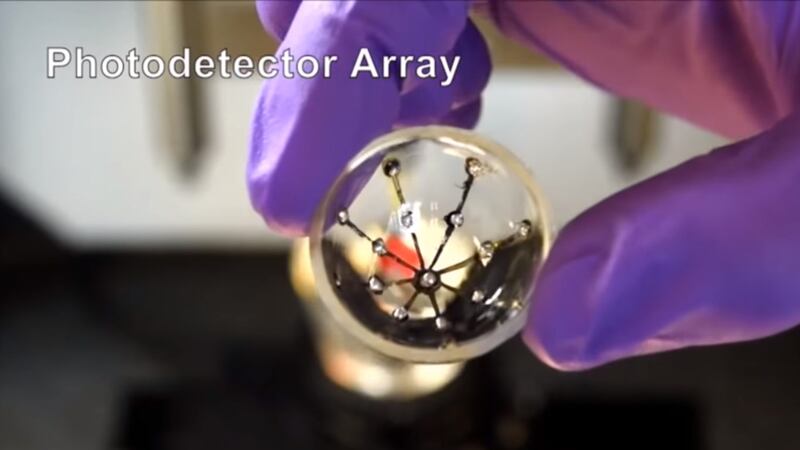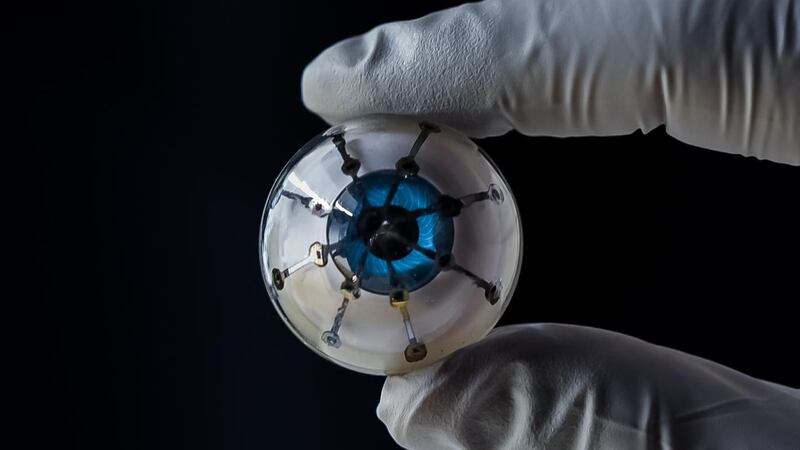Scientists have designed a 3D-printed “bionic” eye they claim could help restore sight in blind people.
A team of researchers at the University of Minnesota in the US says it has, for the first time, created a prototype eye with built-in light receptors.
Dr Michael McAlpine, a co-author of the study and an associate professor of mechanical engineering at the university, said: “Bionic eyes are usually thought of as science fiction, but now we are closer than ever using a multi-material 3D printer.”
The light receptors, or photodiodes, are made up of semiconducting polymer materials and convert light into electricity.
They are fitted on a hemispherical glass dome that makes up the structure of the eye, which is coated with a base ink made up of silver particles.
According to the team, it takes about an hour to print the eye.

The prototype is a long way away from being used in humans but Dr McAlpine said the team was “surprised” by the “25% efficiency in converting the light into electricity”.
He added: “We have a long way to go to routinely print active electronics reliably, but our 3D-printed semiconductors are now starting to show that they could potentially rival the efficiency of semiconducting devices fabricated in microfabrication facilities.”
Dr McAlpine said the next steps are to create a prototype with more efficient light receptors and made using softer material that is comfortable for the human eye.
The research is published in the journal Advanced Materials.








